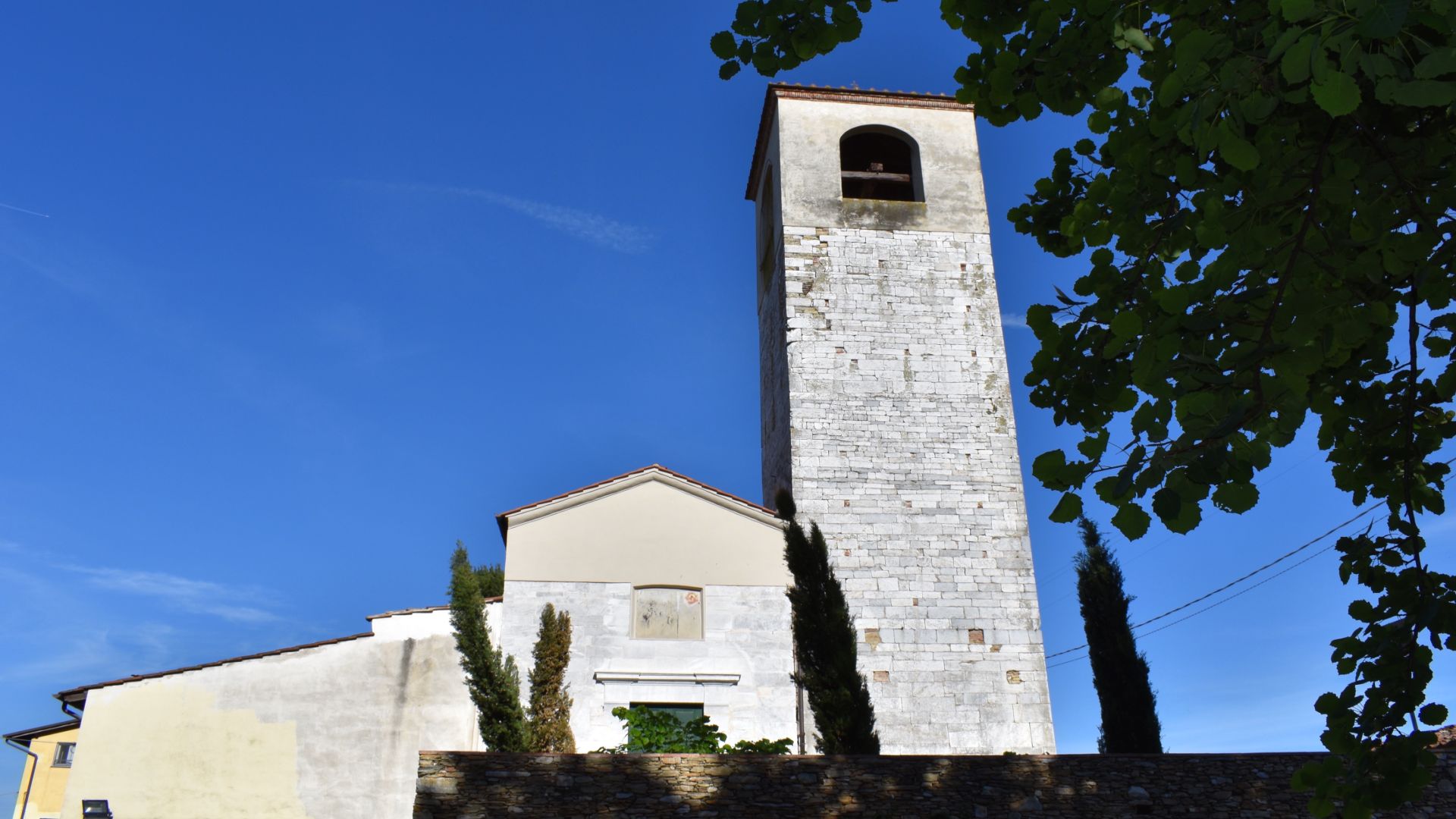From its hilltop position, the village of Pozzuolo dominates a wide stretch of the panorama on Lucca plain. The most beautiful one can be admired from the churchyard of the church of Santo Stefano Protomartire (Saint Stefan Protomartyr). On a clear day one can easily distinguish the towers and bell towers of Lucca towering distincltly into the sky.

CONTACTS
ADDRESS: Via per Vicopelago, 1027, loc. Pozzuolo
TEL: 0583/370006
The ancient village, called "Putiolo" or "Postiolo," is first mentioned in a document dating from 970 and probably the Lombards erected an initial church here, shorter and lower than the present one. The dedication to Saint Stephen also confirms a very ancient origin, when it was common practice to dedicate churches to the first martyr in the history of Christianity.lready in the early medieval period.
The simple austere compact present church dates back to the 17th century. To the right of the facade there are the mighty bell tower made of white limestone ashlars and the part of the belfry plastered in ochre.
Of the ancient structure, white limestone ashlars are still visible in the facade and other sections of the wall face, while the rest is covered with ochre-colored plaster.
Some traces of ancient decoration enrich the rectangular niche above the portal, almost certainly a window which was later closed.
Also on the left side of the church, an ancient stone single lancet window can be seen. The interior of the small church has a single nave, with two side chapels on either side of the presbytery, which is raised by one step and divided from the rest of the church by a marble balustrade.
The roof is built with cross vaults. Above the entrance there is a remarkable organ.
Itinera Romanica (Romanesque itineraries)
Today the church is an important stage on one of the many Romanesque itineraries that characterise the Upper Tyrrhenian area between Italy and France.
Naturalistic, historical and cultural routes pass through small hillside villages and rural environments along paths and ancient tracks, where one encounters minor religious architecture to be rediscovered and enhanced such as churches, basilicas, parish churches and chapels.
The village’s original church dates back to Lombard times by Lucchese craftsmen. During the 17th century, however, the building was completely rebuilt.
The medieval structure was transformed: the new church was remodeled, lengthened, elevated and covered with cross vaults; side chapels were also added.
The building was consecrated again in 1660.
